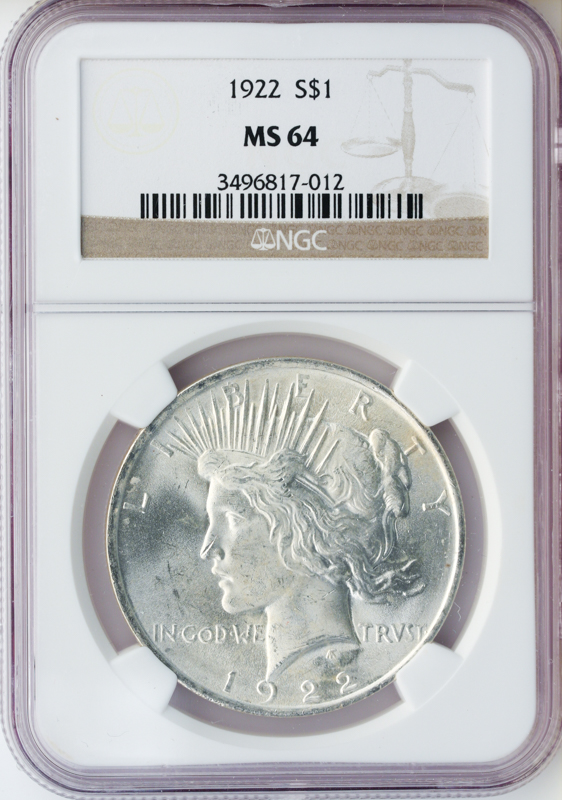$1 Peace MS64 Certified (Dates/Types Vary)









| The Peace Dollar was introduced as a mark of America's victory in World War I and to remedy a critical shortage of silver dollars in the country. During the war, Germany disseminated false claims that Britain did not have enough silver to back its currency. This rumor, along with widespread hoarding, caused a spike in silver prices, threatening Britain's ability to sustain its war effort. To aid its ally, the U.S. sold significant amounts of silver to Britain, which led to the melting of more than 250 million coins, including many Morgan Dollars. In response to this substantial depletion, the U.S. Treasury ordered the minting of new coins using domestically sourced silver. The Philadelphia Mint resumed with the Morgan Dollar in 1921 but soon transitioned to producing the Peace Dollar — a coin proposed by the American Numismatic Association and approved by Congress. A competition determined the design of the Peace Dollar, with the lesser-known artist Anthony de Francisci prevailing over established designers such as Adolph Weinman. De Francisci's inspiration came from his wife, Teresa, who had been awestruck by the Statue of Liberty when she immigrated to New York from Italy. Teresa modeled for the depiction of Liberty on the coin. The obverse of the Peace Dollar features a youthful Liberty with flowing hair and a radiant crown, symbolizing enlightenment, inscribed with "LIBERTY," "IN GOD WE TRUST," and the minting year. The reverse illustrates a bald eagle perched on a mountain, clutching an olive branch, with beams of sunlight behind it. This side is adorned with the phrases "UNITED STATES OF AMERICA," "E PLURIBUS UNUM," "ONE DOLLAR," and "PEACE." The Peace Dollar was minted only during the brief spans of 1921-1928 and 1934-1935, marking one of the shortest mintage periods in U.S. coin history. It also stands as the last silver dollar minted before silver currency production stopped in 1965. The Peace Silver Dollar weighs 26.73 grams and is composed of .900 silver and .100 copper, yielding a net of .77344 troy ounces of pure silver. It features a reeded edge and a diameter of 38.1mm. Over the years, these coins were struck at the Philadelphia, Denver, and San Francisco Mints. This MS64 specimen represents a significant piece of American history and would be a prized asset for any collector of silver dollars. |






 Quick View
Quick View





